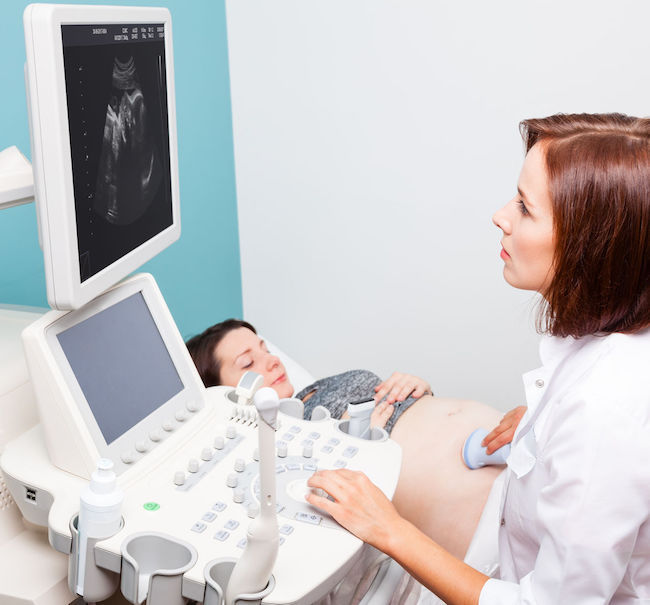Gestational Trofoblastic Disease: Causes, Symptoms, Treatment

Also known as gestational trophoblastic tumor, affection is a generic term used for a group of tumors derived from placental tissue. Although most tumors are benign, a high percentage is malignant, but if they are found in an early stage of the disease, they are easy to treat with nearly 100%. It is a disease that can be misinterpreted as a normal pregnancy because of a very high level of B-HcG, also known as the hormone of pregnancy. It is a rare disease and varies from one geographical area to another, and from one breed to another. Young pregnant women younger than 16 years of age, but also women over 50. Gastrointestinal Trophoblastic Disease: Types Gestational Trophoblastic Disease or BTG is derived from trophoblast or tissue present in pregnancy that develops in the placenta.
Four types of tumors are known: - hydatiform mole - invasive mole - choriocarcinoma - trophoblastic placental tumor These tumors develop from a pregnancy that does not have a normal evolution - abnormal cells develop chaotically and very fast to fetal ones, preventing nutrition and . top Gestational Trofoblastic Disease: Hydatiform Mola Hydatiform Mola is the most common form of the disease and is also known as molar pregnancy. If in the first phase of evolution it is benign, it can turn into malignant tumor. Exit two types of hydatiform, full and partial molasses. The first occurs when sperm fertilize an empty ovum, so the embryo can not form.
The ultrasound exam will only show the placenta, not the fetus. Partial hydatiform moth occurs when there are abnormal cells but also an embryo with severe defects but which will not develop due to the abnormal growth rate of abnormal cells. The risk of becoming a malignant tumor is greater if more than four consecutive months have elapsed between menstruation and treatment, the uterus has changed its size, the patient's age is more than 40 years old, there is a history of . top Gestational Troophoblastic Disease: Symptoms One of the first signs is the increase in abdomen volume, and it becomes soft to the touch and often painful. Vaginal bleeding accompanied by blood clots or brown lesions are also symptoms of the disease that should not be ignored.
Anemia and hypertension are possible disorders in pregnancy and are often correlated with gestational trophoblastic disease. The lack of fetal movements is another sign that something is wrong and it is necessary to consult the doctor. top Gestational Troophoblastic Disease: Treatment Of course, it depends on the type of BTG with which the pregnant woman is diagnosed. Even if it is malignant or benign, it is recommended to surgically remove tumor tissue, avoiding the risk of malignancy and cancer. If there is a risk of relapse of the disease and the woman no longer wants children, the medical recommendation is hysterectomy - surgical removal of the uterus.
Chemotherapy and radiotherapy are two of the methods of treatment used, but they depend on the degree of severity of the disease and the stage in which the condition is diagnosed. .
Source : csid.ro
Views : 3251
Popular Article
- (photo) Nude becomes art.
Posted: 2018-03-17, 9815 views.
- The harmful effects of air conditioning on the skin
Posted: 2017-06-08, 8529 views.
- 3 causes of dyed hair discoloration
Posted: 2017-06-15, 8409 views.
- Why early puberty occurs in girls: symptoms, favors, diagnosis and treatment
Posted: 2017-10-24, 8253 views.
- Good or bad skin treatments in the hot season
Posted: 2017-06-07, 7981 views.
Recommendations
- (photo) Nude becomes art.
Posted: 2018-03-17, 9815 views.
- The harmful effects of air conditioning on the skin
Posted: 2017-06-08, 8529 views.
- 3 causes of dyed hair discoloration
Posted: 2017-06-15, 8409 views.
- Good or bad skin treatments in the hot season
Posted: 2017-06-07, 7981 views.
- Risks of practicing sports on hot days
Posted: 2017-06-12, 7557 views.
 4 effective ingredients in the fight against acne.
4 effective ingredients in the fight against acne. How to get rid of hiccups fast
How to get rid of hiccups fast The wheat bran diet: the secret of lost pounds as if by magic
The wheat bran diet: the secret of lost pounds as if by magic The recipe that will sweeten your soul this weekend!
The recipe that will sweeten your soul this weekend!  Is it dangerous or not to refreeze meat after thawing it?
Is it dangerous or not to refreeze meat after thawing it?  The unusual sign of diabetes indicated by saliva.
The unusual sign of diabetes indicated by saliva. What to drink to boost your immune system.
What to drink to boost your immune system. 10 foods that help you never age.
10 foods that help you never age. What actually happens in your body if you drink a cup of coffee for breakfast
What actually happens in your body if you drink a cup of coffee for breakfast 5 surprising benefits of chia seeds
5 surprising benefits of chia seeds